Printed Transformable Liquid-Metal Metamaterials and Their Application in Biomedical Sensing
Abstract
1. Introduction
2. Simulation
3. Experimental Verification
4. Discussion and Perspective
5. Conclusions
6. Materials and Method
Author Contributions
Funding
Data Availability Statement
Conflicts of Interest
References
- Veselago, V.G. The electrodynamics of substances with simultaneous negative values of ε and μ. Sov. Phys. Uspekhi 1968, 10, 509–514. [Google Scholar] [CrossRef]
- Pendry, J.B. Negative Refraction Makes a Perfect Lens. Phys. Rev. Lett. 2000, 85, 3966–3969. [Google Scholar] [CrossRef]
- Shelby, R.A.; Smith, D.R.; Schultz, S. Experimental Verification of a Negative Index of Refraction. Science 2001, 292, 77–79. [Google Scholar] [CrossRef]
- Smith, D.R.; Vier, D.C.; Padilla, W.; Nemat-Nasser, S.C.; Schultz, S. Loop-wire medium for investigating plasmons at microwave frequencies. Appl. Phys. Lett. 1999, 75, 1425–1427. [Google Scholar] [CrossRef]
- Smith, D.R.; Padilla, W.; Vier, D.C.; Nemat-Nasser, S.C.; Schultz, S. Composite Medium with Simultaneously Negative Permeability and Permittivity. Phys. Rev. Lett. 2000, 84, 4184–4187. [Google Scholar] [CrossRef]
- Smith, D.R.; Schurig, D.; Pendry, J.B. Negative refraction of modulated electromagnetic waves. Appl. Phys. Lett. 2002, 81, 2713–2715. [Google Scholar] [CrossRef]
- Tretyakov, S.A. A personal view on the origins and developments of the metamaterial concept. J. Opt. 2017, 19, 013002. [Google Scholar] [CrossRef]
- Xi, S.; Chen, H.; Jiang, T.; Ran, L.; Huangfu, J.; Wu, B.-I.; Kong, J.A.; Chen, M. Experimental Verification of Reversed Cherenkov Radiation in Left-Handed Metamaterial. Phys. Rev. Lett. 2009, 103, 194801. [Google Scholar] [CrossRef]
- Galyamin, S.N.; Tyukhtin, A.V.; Kanareykin, A. Reversed Cheren⁃kov-transition radiation by a charge crossing a left-handed medium boundary. Phys. Rev. Lett. 2009, 103, 194802. [Google Scholar] [CrossRef] [PubMed]
- Lakhtakia, A. Positive and negative Goos-Hänchen shifts and negative phase-velocity mediums (alias left-handed materials). AEU-Int. J. Electron. Commun. 2004, 58, 229–231. [Google Scholar] [CrossRef]
- Cui, T.J.; Lin, X.Q.; Cheng, Q.; Ma, H.F.; Yang, X.M. Experiments on evanescent-wave amplification and transmission using metamaterial structures. Phys. Rev. B 2006, 73, 245119. [Google Scholar] [CrossRef]
- Frenzel, T.; Kadic, M.; Wegener, M. Three-dimensional mechanical metamaterials with a twist. Science 2017, 358, 1072–1074. [Google Scholar] [CrossRef] [PubMed]
- Silverberg, J.L.; Evans, A.A.; McLeod, L.; Hayward, R.C.; Hull, T.; Santangelo, C.D.; Cohen, I. Using origami design principles to fold reprogrammable mechanical metamaterials. Science 2014, 345, 647–650. [Google Scholar] [CrossRef]
- Yoonho, K.; Hyunwoo, Y.; Ruike, Z.; Chester, S.A.; Xuanhe, Z. Printing ferromagnetic domains for untethered fast-transforming soft materials. Nature 2018, 558, 274–279. [Google Scholar]
- Cai, W.; Chettiar, U.K.; Kildishev, A.; Shalaev, V.M. Optical cloaking with metamaterials. Nat. Photon. 2007, 1, 224–227. [Google Scholar] [CrossRef]
- Gabrielli, L.H.; Cardenas, J.; Poitras, C.B.; Lipson, M. Silicon nanostructure cloak operating at optical frequencies. Nat. Photon. 2009, 3, 461–463. [Google Scholar] [CrossRef]
- Jiang, W.X.; Cui, T.J.; Chin, J.Y.; Cheng, Q.; Yu, G.X.; Yang, X.M.; Liu, R. Equal-thickness invisible cloaks for arbitrarily polygonal-cylindrical regions. Eur. Phys. J. Appl. Phys. 2009, 46, 20702. [Google Scholar] [CrossRef]
- Ni, X.; Wong, Z.J.; Mrejen, M.; Wang, Y.; Zhang, X. An ultrathin invisibility skin cloak for visible light. Science 2015, 349, 1310–1314. [Google Scholar] [CrossRef]
- Zhai, Y.; Ma, Y.; David, S.N.; Zhao, D.; Lou, R.; Tan, G.; Yang, R.; Yin, X. Scalable-manufactured randomized glass-polymer hybrid metamaterial for daytime radiative cooling. Science 2017, 355, 1062–1066. [Google Scholar] [CrossRef]
- Engheta, N. Circuits with Light at Nanoscales: Optical Nanocircuits Inspired by Metamaterials. Science 2007, 317, 1698–1702. [Google Scholar] [CrossRef] [PubMed]
- Hunt, J.; Driscoll, T.; Mrozack, A.; Lipworth, G.; Reynolds, M.; Brady, D.; Smith, D.R. Metamaterial Apertures for Computational Imaging. Science 2013, 339, 310–313. [Google Scholar] [CrossRef] [PubMed]
- Driscoll, T.; Kim, H.T.; Chae, B.G.; Kim, B.J.; Lee, Y.W.; Jokerst, N.M.; Basov, D.N. Memory metamaterials. Science 2009, 325, 1518–1521. [Google Scholar] [CrossRef] [PubMed]
- Bilotti, F.; Alu, A.; Vegni, L. Design of miniaturized metamaterial patch antennas with μ-negative loading. IEEE Trans. Antennas Propag. 2008, 56, 1640–1647. [Google Scholar] [CrossRef]
- Wen, Y.; Zhou, J. Artificial Nonlinearity Generated from Electromagnetic Coupling Metamolecule. Phys. Rev. Lett. 2017, 118, 167401. [Google Scholar] [CrossRef] [PubMed]
- Alqadami, A.S.M.; Jamlos, M.F.; Soh, P.J.; Rahim, S.K.A.; Narbudowicz, A. Left-handed compact MIMO antenna array based on wire spiral resonator for 5-GHz wireless applications. Appl. Phys. A 2016, 123, 1–5. [Google Scholar] [CrossRef][Green Version]
- RoyChoudhury, S.; Rawat, V.; Jalal, A.H.; Kale, S.; Bhansali, S. Recent advances in metamaterial split-ring-resonator circuits as biosensors and therapeutic agents. Biosens. Bioelectron. 2016, 86, 595–608. [Google Scholar] [CrossRef]
- Yi, L.; Liu, J. Liquid metal biomaterials: A newly emerging area to tackle modern biomedical challenges. Int. Mater. Rev. 2017, 62, 415–440. [Google Scholar] [CrossRef]
- Kim, D.; Lee, J. Magnetic-field-induced liquid metal droplet manipulation. J. Korean Phys. Soc. 2015, 66, 282–286. [Google Scholar] [CrossRef]
- Tan, S.-C.; Yuan, B.; Liu, J. Electrical method to control the running direction and speed of self-powered tiny liquid metal motors. Proc. R. Soc. A Math. Phys. Eng. Sci. 2015, 471, 20150297. [Google Scholar] [CrossRef]
- Barber, J.R.; Yoon, H.J.; Bowers, C.M.; Thuo, M.; Breiten, B.; Gooding, D.M.; Whitesides, G.M. Influence of Environment on the Measurement of Rates of Charge Transport across AgTS/SAM//Ga2O3/EGaIn Junctions. Chem. Mater. 2014, 26, 3938–3947. [Google Scholar] [CrossRef]
- Simeone, F.C.; Yoon, H.J.; Thuo, M.M.; Barber, J.R.; Smith, B.; Whitesides, G.M. Defining the Value of Injection Current and Effective Electrical Contact Area for EGaIn-Based Molecular Tunneling Junctions. J. Am. Chem. Soc. 2013, 135, 18131–18144. [Google Scholar] [CrossRef] [PubMed]
- Song, H.; Kim, T.; Kang, S.; Jin, H.; Lee, K.; Yoon, H.J. Ga-Based Liquid Metal Micro/Nanoparticles: Recent Advances and Applications. Small 2019, 16, e1903391. [Google Scholar] [CrossRef]
- Zhang, H.-F.; Wang, Z.-L.; Hu, C.-X.; Liu, H.-B. A tailored broadband terahertz metamaterial absorber based on the thermal expansion feature of liquid metal. Results Phys. 2020, 16, 102937. [Google Scholar] [CrossRef]
- Wang, Z.-L.; Hu, C.-X.; Liu, H.-B.; Zhang, H.-F. A Newfangled Terahertz Absorber Tuned Temper by Temperature Field Doped by the Liquid Metal. Plasmonics 2020, 16, 425–434. [Google Scholar] [CrossRef]
- Song, Q.H.; Zhu, W.M.; Wu, P.C.; Zhang, W.; Wu, Q.Y.S.; Teng, J.; Shen, Z.X.; Chong, P.H.J.; Liang, Q.X.; Yang, Z.C.; et al. Liquid-metal-based metasurface for terahertz absorption material: Frequency-agile and wide-angle. APL Mater. 2017, 5, 066103. [Google Scholar] [CrossRef]
- Xu, J.; Fan, Y.; Yang, R.; Fu, Q.; Zhang, F. Realization of switchable EIT metamaterial by exploiting fluidity of liquid metal. Opt. Express 2019, 27, 2837–2843. [Google Scholar] [CrossRef]
- Reichel, K.S.; Lozada-Smith, N.; Joshipura, I.D.; Ma, J.; Shrestha, R.; Mendis, R.; Dickey, M.D.; Mittleman, D.M. Electrically reconfigurable terahertz signal processing devices using liquid metal components. Nat. Commun. 2018, 9, 4202. [Google Scholar] [CrossRef]
- Ling, K.; Kim, H.K.; Yoo, M.; Lim, S. Frequency-switchable metamaterial absorber injecting eutectic gallium-indium (eGaIn) liquid metal alloy. Sensors 2015, 15, 28154–28165. [Google Scholar] [CrossRef]
- Ling, K.; Kim, K.; Lim, S. Flexible liquid metal-filled metamaterial absorber on polydimethylsiloxane (PDMS). Opt. Express 2015, 23, 21375. [Google Scholar] [CrossRef]
- Kim, K.; Lee, D.; Eom, S.; Lim, S. Stretchable metamaterial absorber using liquid metal-filled polydimethylsiloxane (PDMS). Sensors 2016, 16, 521. [Google Scholar] [CrossRef]
- Zhang, W.; Chen, J.; Li, X.; Lu, Y. Liquid Metal-Polymer Microlattice Metamaterials with High Fracture Toughness and Damage Recoverability. Small 2020, 16, e2004190. [Google Scholar] [CrossRef]
- Wang, J.; Liu, S.; Guruswamy, S.; Nahata, A. Reconfigurable terahertz metamaterial device with pressure memory. Opt. Express 2014, 22, 4065–4074. [Google Scholar] [CrossRef] [PubMed]
- Liu, P.; Yang, S.; Jain, A.; Wang, Q.; Jiang, H.; Song, J.; Koschny, T.; Soukoulis, C.M.; Dong, L. Tunable meta-atom using liquid metal embedded in stretchable polymer. J. Appl. Phys. 2015, 118, 014504. [Google Scholar] [CrossRef]
- Seunghyun, E.; Sungjoon, L. Stretchable complementary split ring resonator (CRSS)-based radio frequency (RF) sensor for strain direction and level detection. Sensors 2016, 16, 1667. [Google Scholar] [CrossRef]
- Ren, Y. Fabrication and Biosensing Application of Flexible Circuits Based on Liquid Metal. Master’s Thesis, Tsinghua University, Beijing, China, 2021. [Google Scholar]
- Byeon, S.E.; Kim, M.; Yoon, H.J. Maskless Arbitrary Writing of Molecular Tunnel Junctions. ACS Appl. Mater. Interfaces 2017, 9, 40556–40563. [Google Scholar] [CrossRef] [PubMed]
- Byeon, S.E.; Kang, H.; Yoon, H.J. Toward Printed Molecular Electronics: Direct Printing of Liquid Metal Microelectrode on Self-Assembled Monolayers. Adv. Electron. Mater. 2020, 7, 2000829. [Google Scholar] [CrossRef]
- Park, Y.-G.; An, H.S.; Kim, J.-Y.; Park, J.-U. High-resolution, reconfigurable printing of liquid metals with three-dimensional structures. Sci. Adv. 2019, 5, eaaw2844. [Google Scholar] [CrossRef]
- Guo, R.; Yao, S.; Sun, X.; Liu, J. Semi-liquid metal and adhesion-selection enabled rolling and transfer (SMART) printing: A general method towards fast fabrication of flexible electronics. Sci. China Mater. 2019, 62, 982–994. [Google Scholar] [CrossRef]
- Wang, Q.; Yu, Y.; Yang, J.; Liu, J. Fast Fabrication of Flexible Functional Circuits Based on Liquid Metal Dual-Trans Printing. Adv. Mater. 2015, 27, 7109–7116. [Google Scholar] [CrossRef]
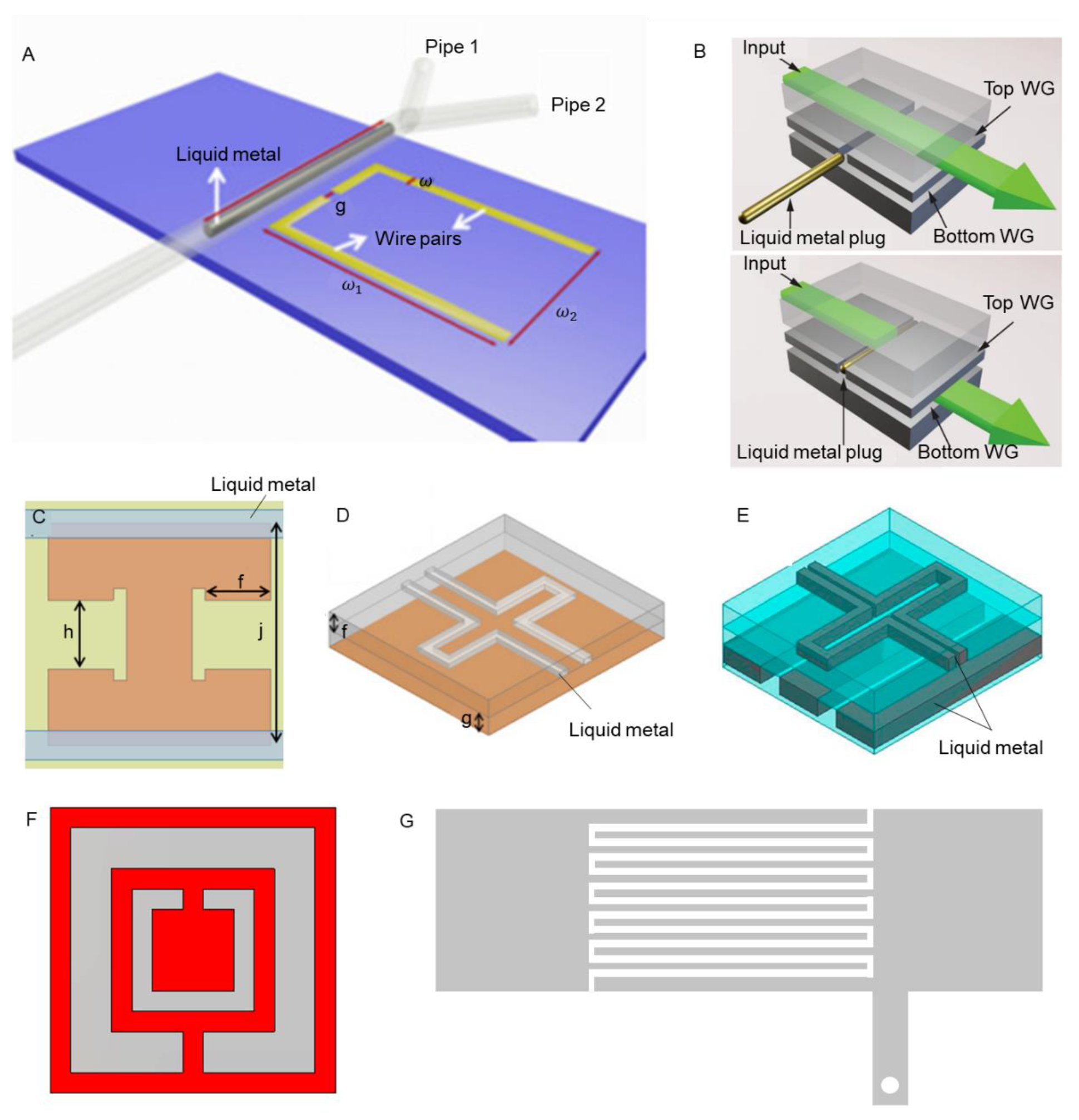
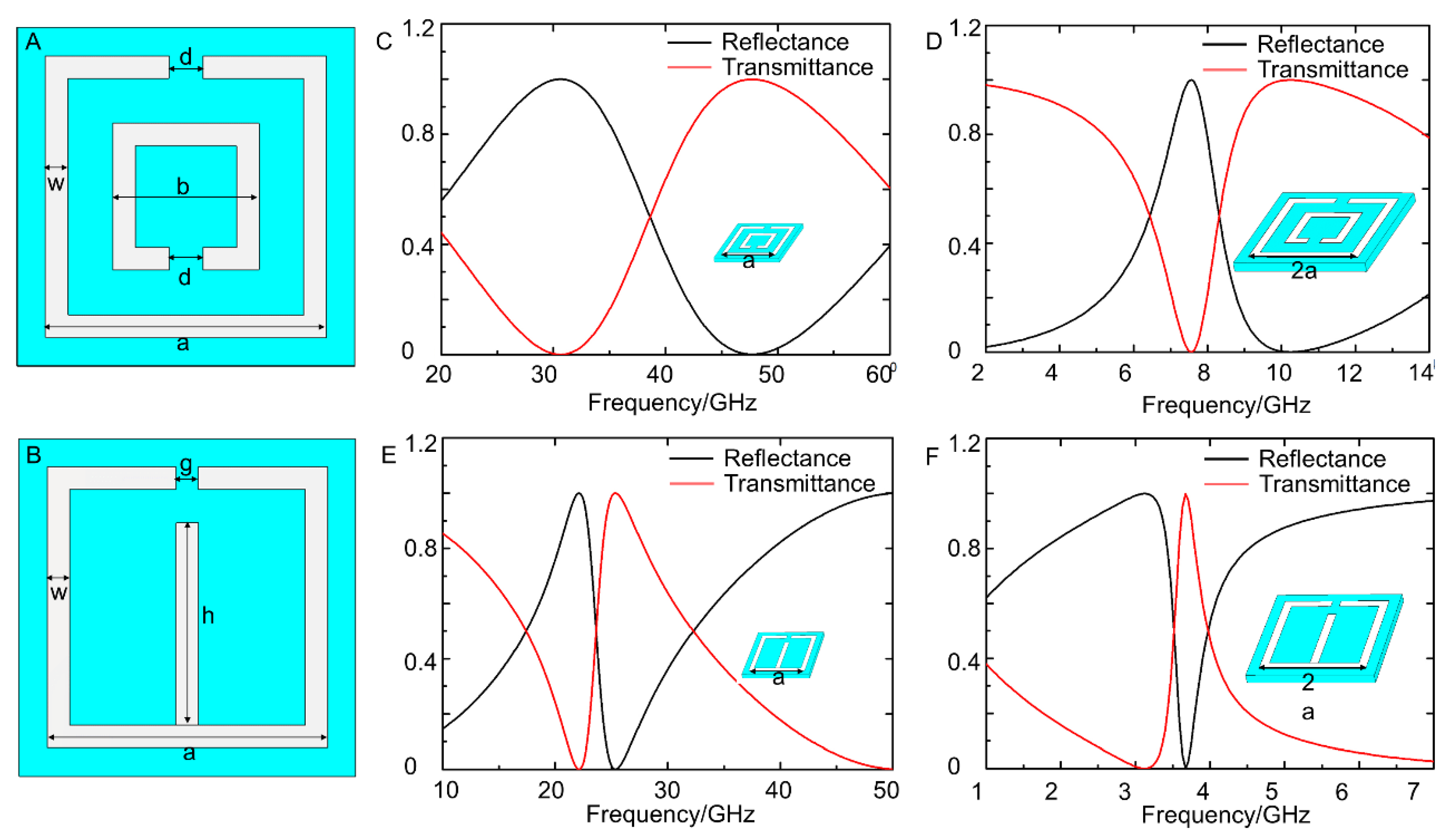
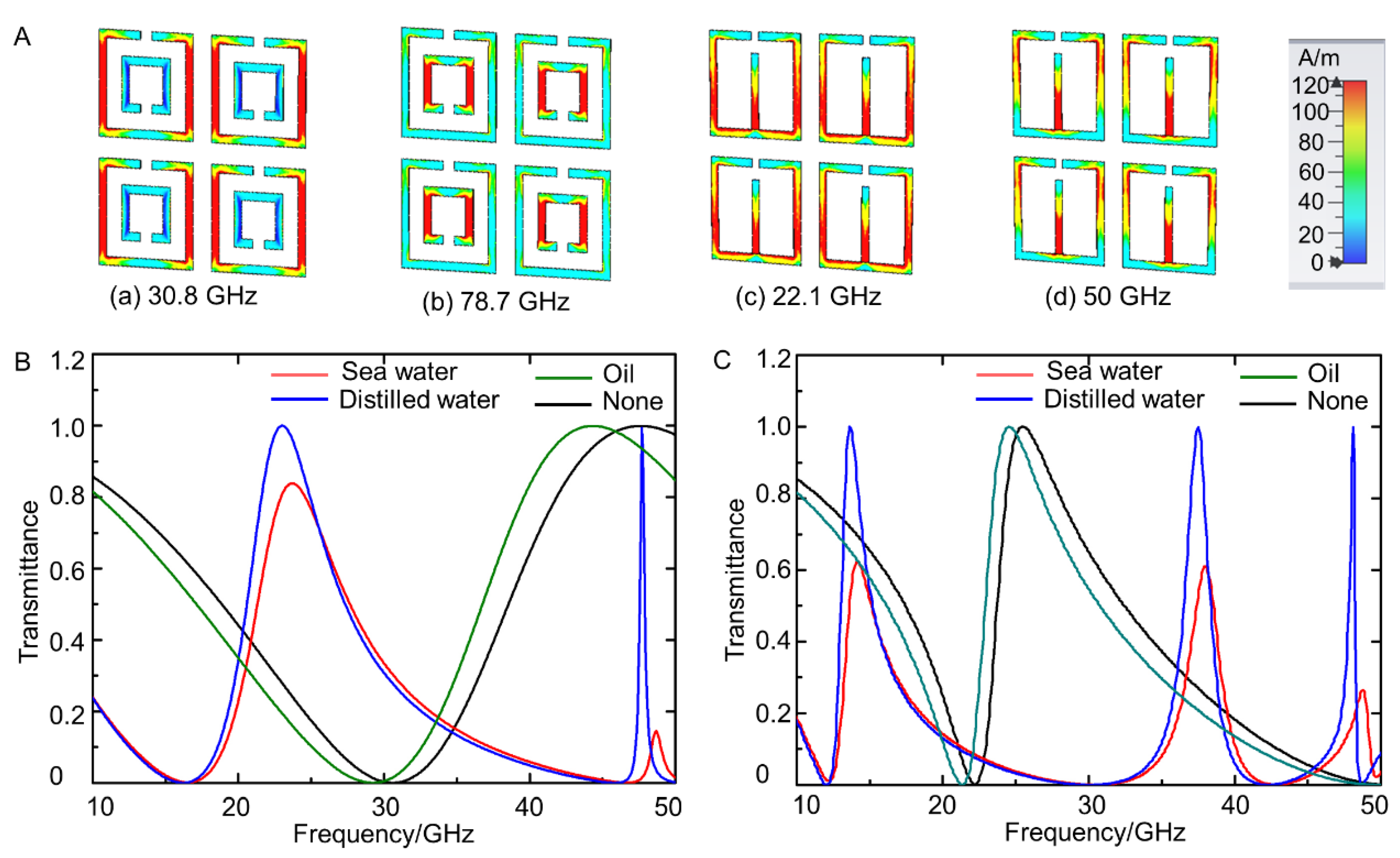
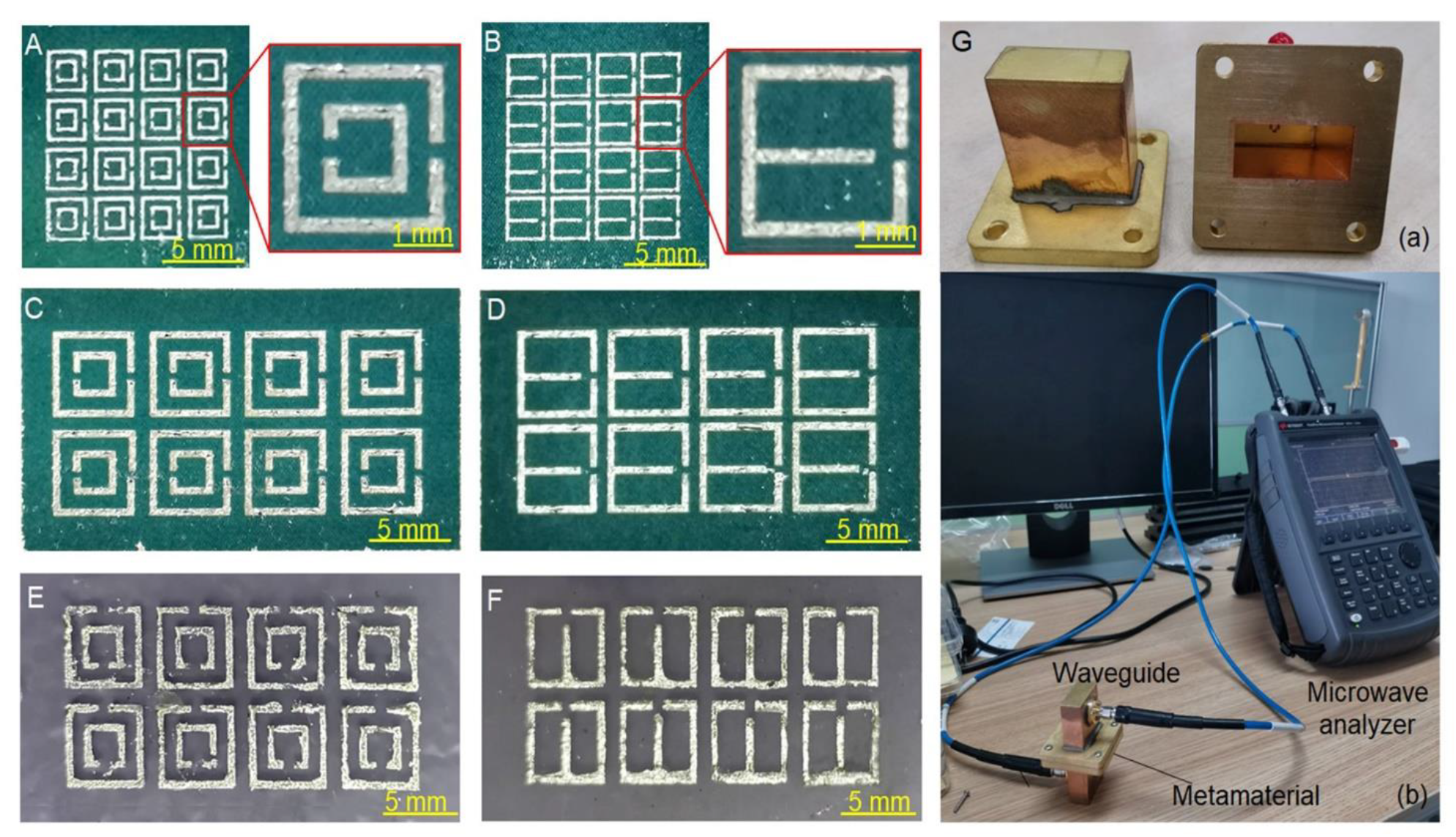
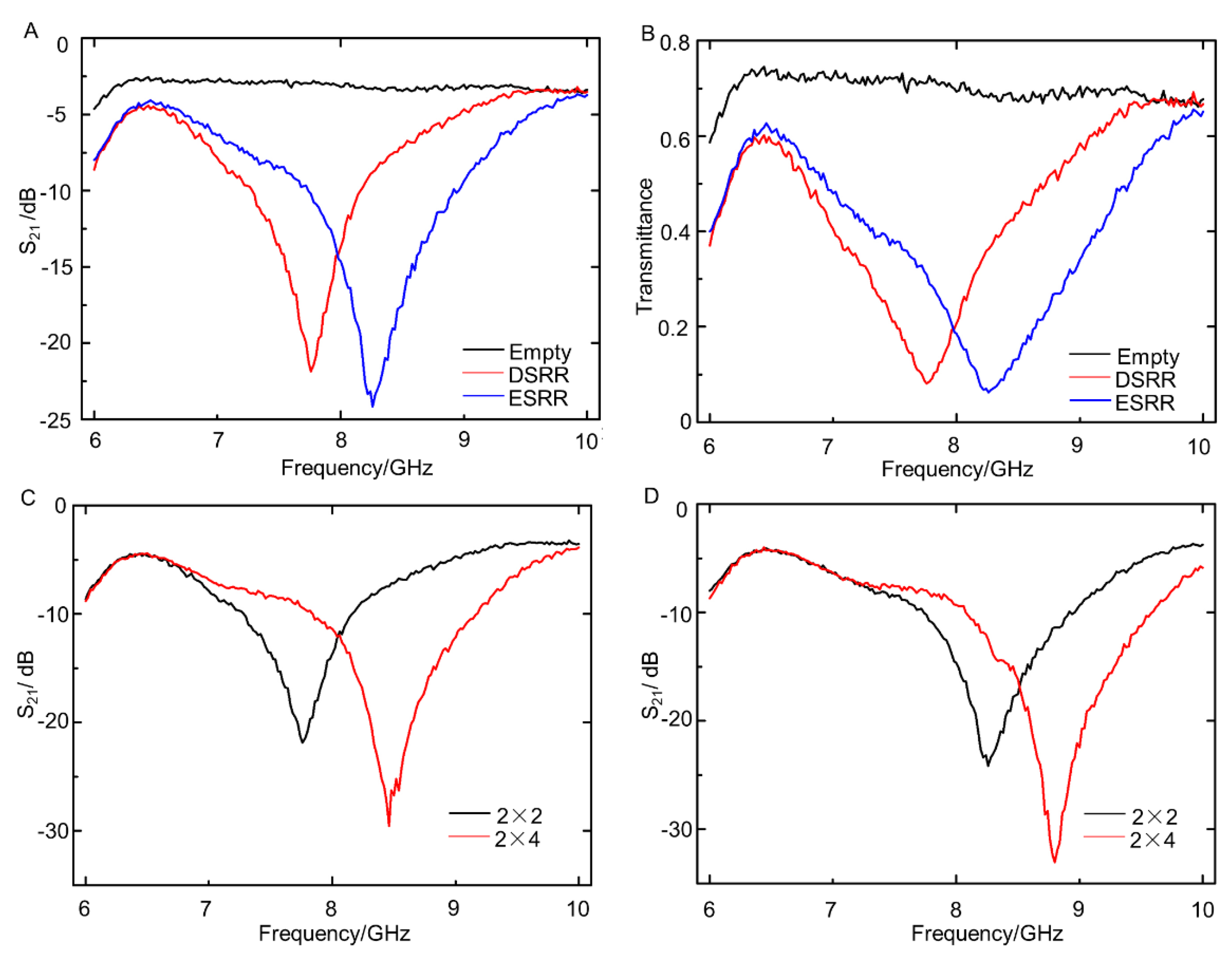
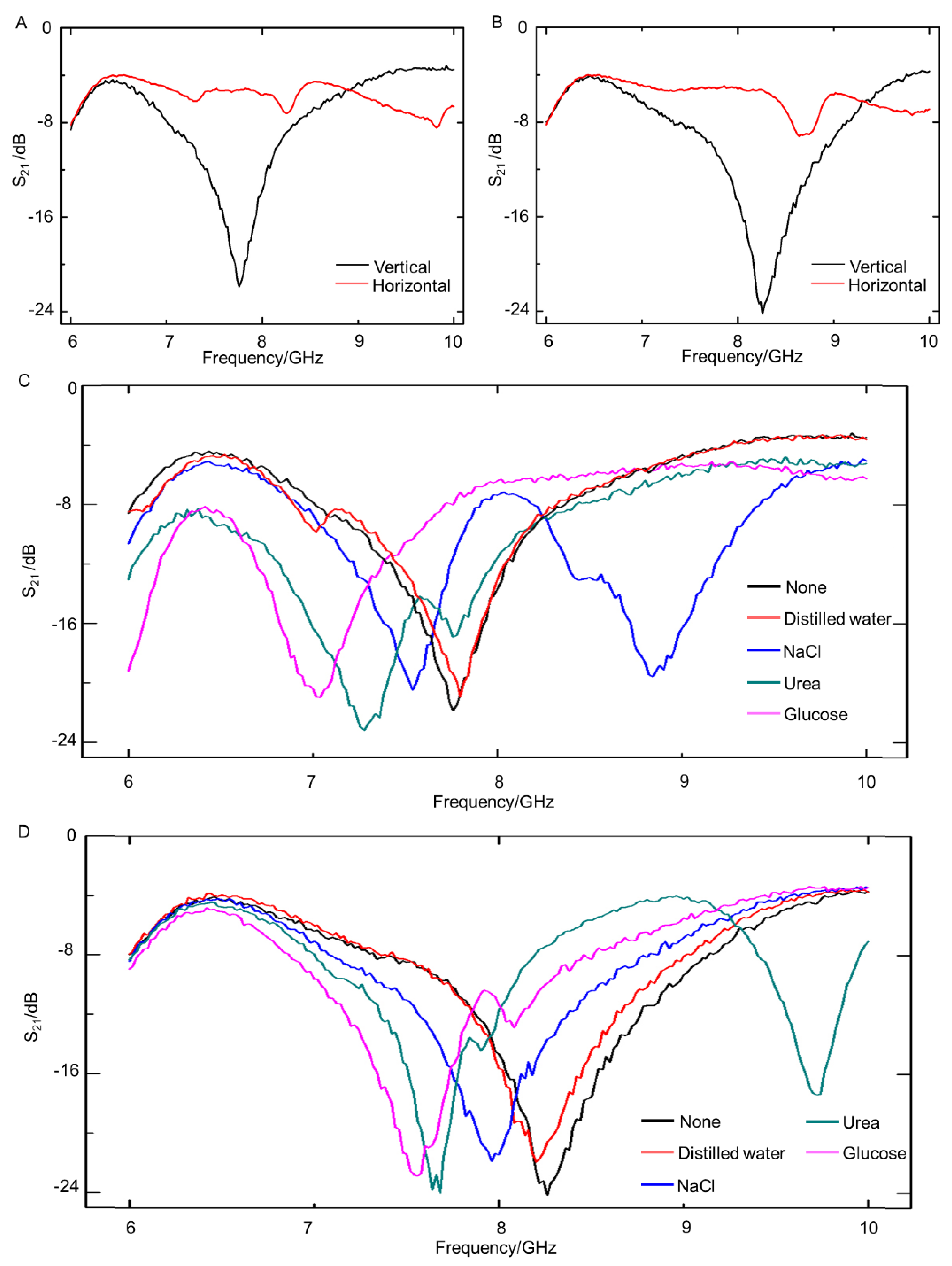
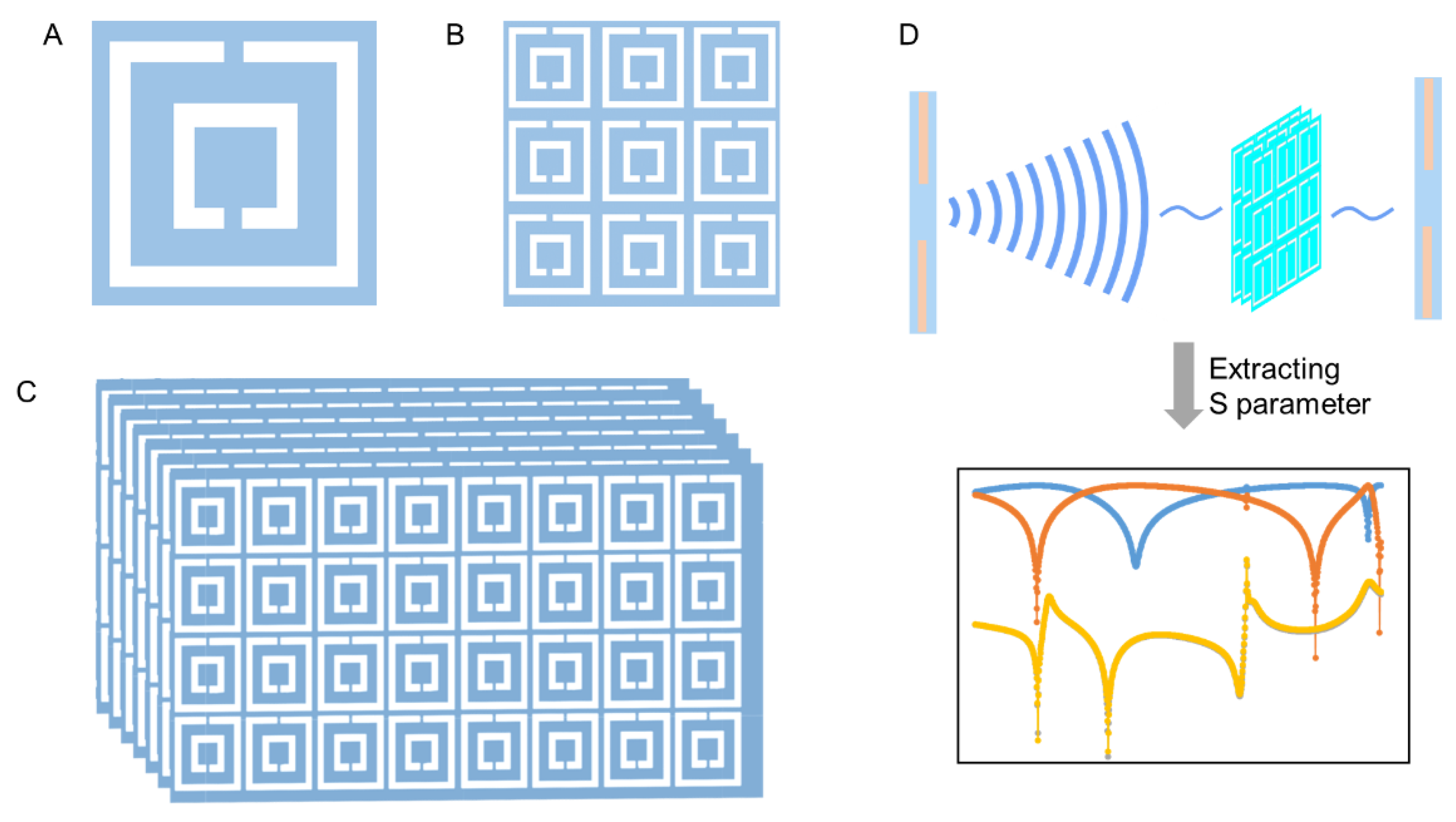
Publisher’s Note: MDPI stays neutral with regard to jurisdictional claims in published maps and institutional affiliations. |
© 2021 by the authors. Licensee MDPI, Basel, Switzerland. This article is an open access article distributed under the terms and conditions of the Creative Commons Attribution (CC BY) license (https://creativecommons.org/licenses/by/4.0/).
Share and Cite
Ren, Y.; Duan, M.; Guo, R.; Liu, J. Printed Transformable Liquid-Metal Metamaterials and Their Application in Biomedical Sensing. Sensors 2021, 21, 6329. https://doi.org/10.3390/s21196329
Ren Y, Duan M, Guo R, Liu J. Printed Transformable Liquid-Metal Metamaterials and Their Application in Biomedical Sensing. Sensors. 2021; 21(19):6329. https://doi.org/10.3390/s21196329
Chicago/Turabian StyleRen, Yi, Minghui Duan, Rui Guo, and Jing Liu. 2021. "Printed Transformable Liquid-Metal Metamaterials and Their Application in Biomedical Sensing" Sensors 21, no. 19: 6329. https://doi.org/10.3390/s21196329
APA StyleRen, Y., Duan, M., Guo, R., & Liu, J. (2021). Printed Transformable Liquid-Metal Metamaterials and Their Application in Biomedical Sensing. Sensors, 21(19), 6329. https://doi.org/10.3390/s21196329





